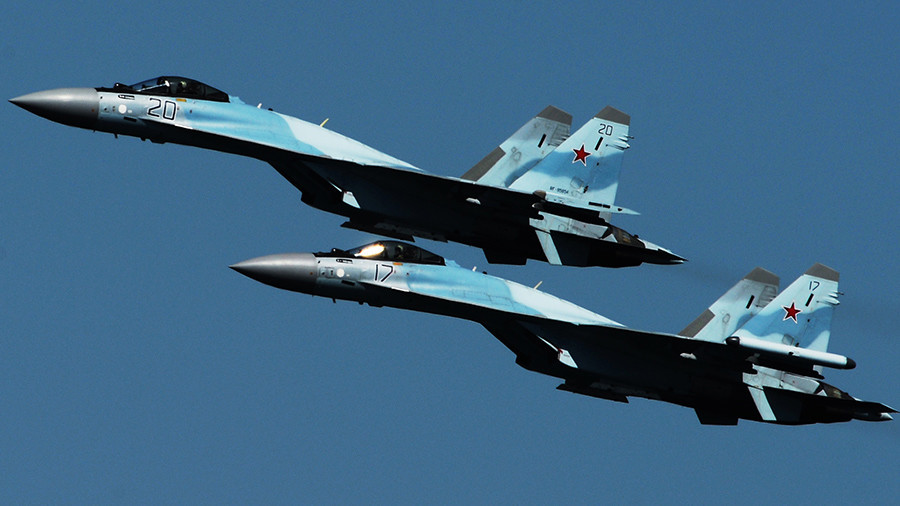
Written by Abdulwahab al-Khateeb.
Six years ago today, on September 30, 2015 Russian jets conducted their first airstrikes in Syria. Russia had officially and overtly entered the Syria conflict in what many viewed as yet another European intervention in Middle Eastern affairs. Yet is it simply a case of a friendly nation intervening on behalf of their ally or the beginning of a subtle occupation and the return of Russian Imperialism to the East?
From Peter to Putin …
Russian involvement in Eastern affairs can be traced back to the days of Peter the Great when the Czarist Russian and the Eastern Ottoman Empires were still at their height. Imperial influence in the Levant took the form of schools and various religious and educational projects aimed at projecting the Empire’s “soft power” into an area long of religious and geopolitical import.
The modern Russo-Syrian military relationship found its roots in the Syrian-Soviet ties of the 1950s. In the wake of the Baghdad Pact of 1955, Syria set out along a path of ever-increasing Russian influence. By February the following year, Syria found itself procuring not only arms but also training from the USSR. The alignment of the western powers with Israel caused many of its Arab neighbors to tighten their relations with the Soviets.
In 1957, amid ever-increasing pressure from, and the growing hostiles between, Israel and the Arab states Syria requested Moscow’s intervention. Damascus asked for several squadrons of Soviet jets and pilots to be sent to Syria, as a visible show of support and an active deterrent.
However, as a report from Israeli intelligence of the time mentioned, “…fear of a global war that may break out in the Middle East, mainly due to the objection and firm steps taken by the USA on the question of Soviet penetration [into the region]” meant that no such aid would be forth coming.
Fast-forward 58 years later, 2015, Syria’s dictator Bashar Assad is on the brink of loss. Desperate, Damascus begs for Russian aid. Seeing the opportunity to fill the vacuum left by a weakened and passive US in the region Putin pounces on the chance for him and Russia to reenter the stage as a regional player of consequence. In fall of that year, Russia officially enters the Syrian conflict, finally sending the air and manpower requested nearly six decades before.
The year is 1971, Bashar’s father Hafez Assad is “president” of Syria and has just given the USSR access to the naval base in Tartus, thus allowing the Kremlin to project Soviet naval power into the Mediterranean turning their ‘black water’ fleet into a true ‘blue water’ force. By the mid-70s there are more USSR military advisers in Syria than in any other non-Soviet bloc nation. In 1980 the two powers sign a bilateral agreement. It becomes common place for Syria officers to attend Russian military academies in the USSR.
The decades that followed saw the fall of the Soviet Union and with it a decline in Russian influence in both the global and regional stage. The Yeltsin years were reserved when it came to projecting Russian power abroad, especially in the Middle East. However, with the rise to power of the former KGB officer Putin, Russia once again set her eyes and ambitions outwards – and to the east.
Putin made overtures to many nations in the Middle East, both former clients and adversaries alike. He was the first Russian leader to visit Israel and demonstrated the pure pragmatism of the Imperial Russia of old, unfettered by communist ideology, concerned solely with risks and benefit.
The Arab Spring presented the Kremlin with new dangers and opportunities. While regime change, especially of former client states could sour future or existing Russian interests, they could also allow Putin to make new inroads or strengthen ties with states long out of Russian orbit.
This new “no holds barred” pragmatism was aptly displayed in Putin’s handling of the Muslim Brotherhood’s rise to power in the wake of the Mubarak regime’s fall. Despite the organization’s classification, by the Russian government, as a terrorist organization Putin hosted Egypt’s new President Elect Morsi. When Morsi was later deposed by Sisi in a military coup, Putin was quick to treat the officer cum president the same.
However, while Putin was willing to be flexible when it came to gaining new influence the specter of loss of waning spheres of influence and hopes of future expansion could not so easily be overlooked. Russia took a string stance to ensure things in Syria did not play out as they had in Egypt or Libya. Syria remained a key asset for maintaining and advancing Russian political, military and economic influence.
Nearly five years into the Syrian uprising and Putin had nearly exhausted every tool in his bag of tricks to keep the Assad regime in power. Various political and peace ventures, tying the hands of the UN and western powers and a steady stream of weapons and financial support. However, nothing had been able to stave off what seemed to be the imminent collapse of yet another Arab regime. It was the fall of 2015, and it seemed before winter Bashar and his regime would be finished.
Assad needed Putin’s help, and Putin wanted Syria. So Russia agreed to help, but it would come at a heavy cost. Not in Russian lives, but in Syrian sovereignty. In exchange for Moscow’s intervention Damascus would give Russia and her elites many concessions and contracts.
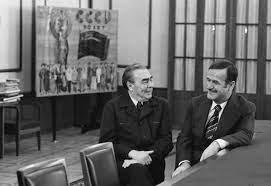
Vladimir Musaelyan/TASS
Low Risk, High Reward
Moscow would help, but a history of bloody conflicts both at home and abroad had taught Russians that war was costly. Crimea, WWII, Afghanistan, the Chechen wars, all remained at the forefront in the minds and psyches of Russians. This venture would have to be different, Russia couldn’t commit to boots on the ground and risk another Chechnya or Afghanistan. Assad’s troops had proven to be relatively ineffective against opposition forces. Fortunately, Russia had other more viable options in the various Iranian controlled forces already in operation in Syria.
Unopposed in the skies the lives of Russian pilots would be safe, and with a confederation of Iranian led Shiite militias and Hezbollah spearheading ground operations Russian risks were next to none. Unlike previous ventures where Russian lives would be at risk in the field this operation would be low risk with high rewards.
Russian officers would coordinate and oversee overall operations as well as provide, intelligence, reconnaissance and air-support. This model would serve Russia well especially as many SAR officers had been trained in the military academies of Moscow and could communicate directly with their handlers in Russian.
Chief of the Russian General Staff, Valery Gerasimov, said, “there is a group of [Russian] military advisers in every [Syrian] unit—battalion, brigade, regiment, or division. Essentially they (the Russians) plan combat operations.” And Ruslan Pukhov wrote about Russian operations in Syria, “Even more importantly, high-ranking Russian officers … [directly] led Syrian troops on many important stretches of the front.”
With this model firmly in place, Syrian and Iranian boots on the ground with Russian officers and air-force overseeing things from above, Putin was able to turn what seemed an assured defeat for Assad into the hope of a Pyrrhic victory.

Here to Stay…
In 2016, after such feats as the recapture of the city of Aleppo, on the heels of a massive bombing campaign, reducing most of the city to uninhabitable ruins, Putin was ready to declare “victory”. Mission accomplished, Assad was still in power and the opposition was now on the back-foot with regime forces making advancements for the first time in the nearly five year conflict. With their work done it was now time for Russian troops to return home — yet they stayed on.
Again, ahead of Russian elections, in 2017 Putin proudly announced that ISIS had been vanquished and that the war on terror in Syria was a success, Russian troops would now be withdrawn from Syria, mandate met, mission accomplished. And yet again they remained.
What began as “an intervention” was beginning to take the shape of an occupation. Putin, ever the pragmatist, couldn’t leave Syria in the hands of the Assad regime alone, or worse to Iranian interests. Without the watchful and protecting presence of Russia the regime was at risk of collapse, mismanagement or manipulation by other parties. Russia had to protect her own interests and investments.
Thus, despite announcing Russia’s withdrawal in both March 2016 and again in December 2017 the Russian occupation showed no signs of diminishing their military presence in the embattled country. As Chris Miller of Foreign Policy wrote, “The point was never to win and to leave. The goal was to stay—to make Russia a major player in the region, and then to defend this new role.”
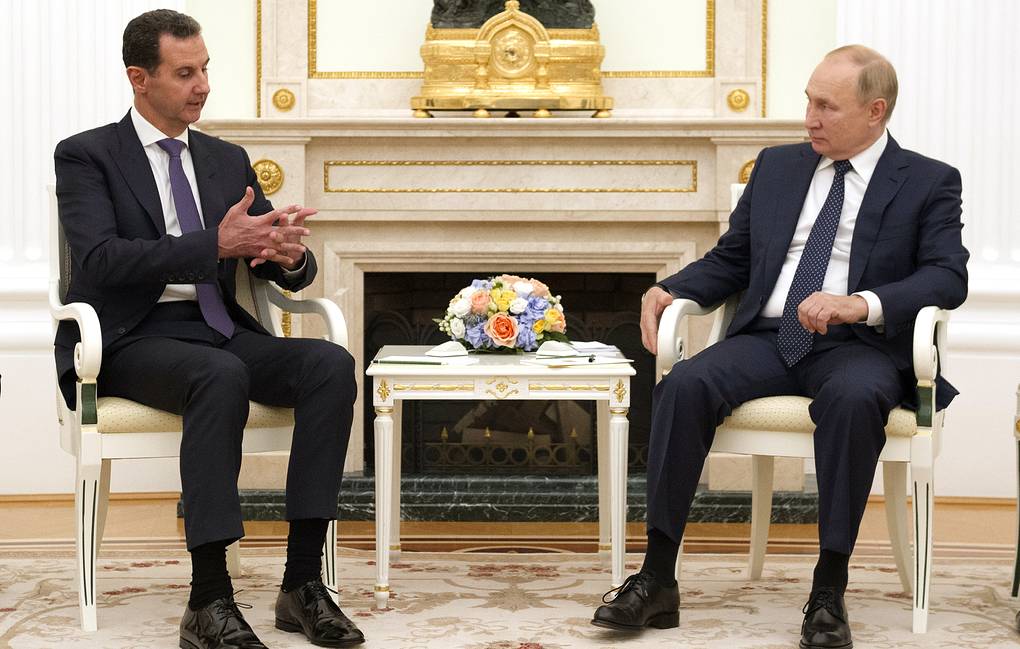
© Mikhail Klimentyev/Russian Presidential Press and Information Office/TASS
Spoils of War
As with his Imperial role-model Peter the Great, Putin recognized the importance of naval strength and access to the Mediterranean was vital to projecting maritime power. Therefore, maintaining a Russian naval presence in Syria was paramount to Russian prestige and potency. Moscow demanded that Damascus give exclusive rights and full sovereignty of both the Tartus naval base and airbase in Latakia. Unsurprisingly, Russia won another 49 years of use for the two bases. Being the only Russian military bases outside the former Soviet bloc this was a jewel in Putin’s crown.
Putin managed to secure lucrative agreements in the energy sector for Russia and his inner circle. In 2018, they gained the exclusive rights to produce oil and gas in Syria as well as the contracts for rebuilding and refurbishment of the oil and gas sector. These presented Moscow and Russian companies the potential for huge profits in the fossil fuel and energy markets.
Oligarchs and elites with close ties to Putin and the Kremlin, like Yevgeny Prigozhin, a Russian businessman nicknamed “Putin’s chef”, associated with the mercenary for hire company Wagner, was awarded oil and gas deals with the Assad regime while Gennady Timchenko procured exclusive authority to mine phosphates and run the commercial ventures in the port of Tartus.

Syria was not just enriching the coffers of the Kremlin and Oligarchs but was an invaluable open air lab where Russian arms developers could test their latest weapons on the civilian population of Syria. Using women and children as proverbial lab rats to test both military doctrine and hardware. Syria became the training grounds for Russian pilots and officers and the testing grounds for weapons manufactures.
The new paradigm in the Russian military is that to get promoted you must serve in Syria. In the span of only a few years 48,000 officers and service members have served tours in Syria. Working relatively short rotations of 2-3 months members use the time as live-fire practical training, treating their tours as case studies for applying theory, improving personal performance and honing tactics and techniques.
Russia tested not only modern weapons on Syrian civilians but also soviet era bombers that had gone six decades without ever having seen combat use. Varying statements from Russian Defense Minister Sergei Shoigu have claimed that between 300-600 weapons had been “tested in military action in Syria”. Just like the service men many of the weapons have seen multiple deployments as they have been redesigned after combat use to then receive further testing in the Syrian theater
Moscow sees Syria not only as an ideal live-fire range for testing their latest hardware but also as a live demonstration and advertisement for Russia arms. The head of the Federal Service for Military-Technical Cooperation, Dmitry Shugayev, boasted in an interview on Rossiya 24 that, “We came out with a highly successful year” when speaking on the government’s sales of Russian arms. In the years since entering the Syrian confrontation Russian arms sales have increased as much as 103% and 2018 sales in the Middle East market alone reached $55 billion. Proving that war is still very profitable, and for Moscow, the Syrian venture has been especially lucrative.
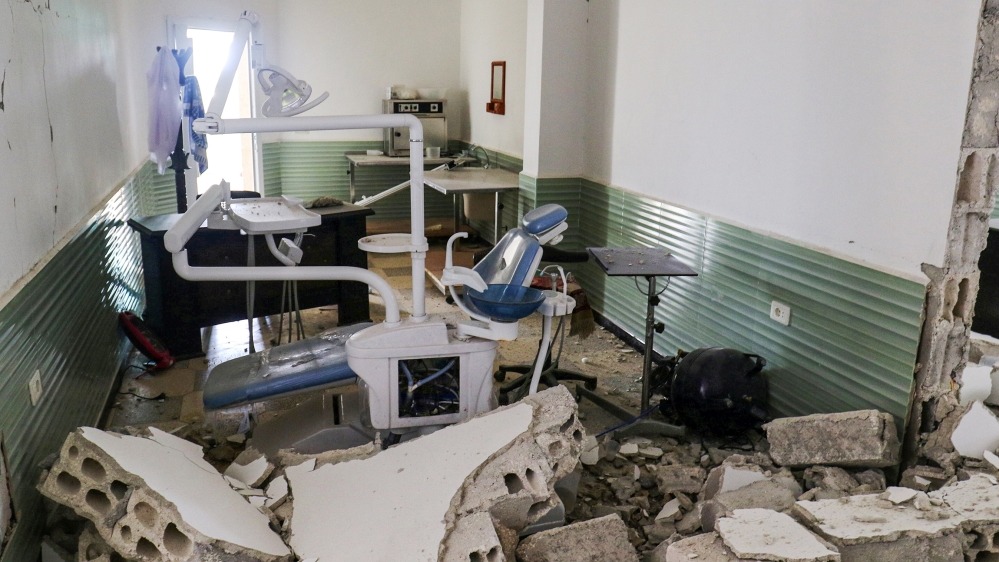
While Russia may have found its Syrian intervention to be a profitable venture it’s perhaps because the ones actually paying for it are the Syrian people themselves. The cost in men, women and children murdered, homes, and livelihoods destroyed and lives ruined is astronomical. The very real and high cost of this war, is being paid by the millions of displaced and the hundreds-of-thousands of imprisoned, orphaned, murdered and maimed Syrians.
Michelle Bachelet, the High Commissioner for Human Rights of the UN recently stated that a confirmed 350,209 civilians have been killed in the decade long conflict. The list is comprised only of people identifiable by full name, with an established date of death, and who died in an identified governorate. Bachelet went on to explain that due to the strict criteria, and number of deaths thus excluded, there is no doubt of “the existence of a wider number of killings.”
Regarding the number of civilians killed by Russian airstrikes alone the Syrian Observatory for Human Rights (SOHR) and Airwars (AW) two human rights organizations which document deaths, war-crimes, and violations by various actors in Syria, have calculated the number of deaths to be between 8,672 (SOHR) and 4,096–6,085 (AW).
Even at their most modest estimations these figures do not account for the thousands of injured, permanently maimed, lost, or otherwise unknown. It is often hard to tabulate the dead when entire villages are reduced to rubble with their occupants entombed inside or rendered to little more than pieces of flesh and bone.
Nor do those figures account for the nonetheless culpable civilian causalities, atrocities and war-crimes carried out by the regular SAR ground troops under the orders of Russian officers and planners, crimes which can easily be lain at the feet of Russian boots.
Russian advisers guide the strategy of, and plan military operations, among the major roles played by Russian troops are artillery spotters and aviation controllers placing them in direct authority of where both air and land based bombardment are fired. More often than not, these targets are homes, places of worship (including churches), schools, hospitals, bakeries, shelters and refugee camps in residential areas.
Kenneth Roth, the director of Human Rights Watch (HRW) said of Russian-led tactics, “the Syrian-Russian alliance strikes on Idlib’s hospitals, schools, and markets showed callous disregard for civilian life, [these] repeated unlawful attacks appear part of a deliberate military strategy to destroy civilian infrastructure and force out the population, making it easier for the Syrian government to retake control.” The most recent such Russian led offensive displaced 1.4-1.7 million people in a single month.
Moscow’s calculated and targeted aggression against the civilian population and vital infrastructure of Syria is one clearly meant to exacerbate the already devastating and unprecedented refugee crisis. A strategy that creates millions of IDPs and sends thousands in the already overcrowded camps and “safe zones” scrambling for the borders of Turkey and shores of Europe.
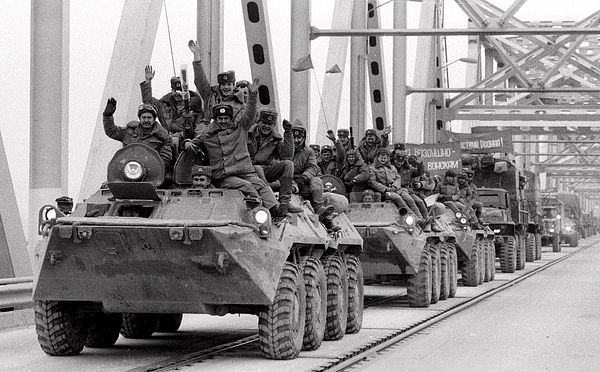
AP Photo /Vitaly Zaporozhchenko, File
Afghanistan: Learning Lessons Past & Present
While the Kremlin and many analysts have claimed that Syria is “not Afghanistan” and the outcome thus far has been favorable, when looking at figures such as causalities and revenue spent its easy to see how such conclusions are drawn.
It’s true that in the ten year Soviet-Afghan war the USSR lost a confirmed 14,453 lives with more than 53,000 injured while the Russian losses in Syria, by official accounts, are not even one-tenth of that in six years. However, when looking at what many today consider the failure of the 20 year US-Afghan, the numbers show that in twice the time the US suffered only 2,455 causalities with 20,000 injured. Yet most agree that despite these “better” figures the US suffered a greater and more humiliating defeat.
In 20 years of war, with the backing of NATO and may other allies the US was unable to achieving a decisive military victory over a greatly outmatched adversary. What was the great mistake of the US and her allies in the Afghan war and the same mistake that the USSR made as well. Hubris. The US and the world underestimated the determination and perseverance of the Taliban in their struggle, and it cost them.
While it is true that Syria and Afghanistan are very different places. In terms of people, culture, topography, geography, climate and area, and yes the conflicts and belligerents are different but the shared factors that may serve to make all the difference are the determination and perseverance borne of a just and righteous cause and strong faith.
Just as no one likely thought they would be hearing on the 20th anniversary of 9/11 that the Taliban were in control of Kabul and the US was in full retreat, tomorrow too may the nations be surprised at the news that Russia has left Syria in defeat and the Syrian people are free of more than half a century of Assad family oppression.
In an October 2015 interview, only two days after the first airstrikes in Syria, Alexey Pushkov, chairman of the Duma’s Foreign Affairs Committee optimistically sated that the entire Russian operation would take only “three or four months.”
Almost a year to the day since the intervention had begun, Russian Deputy Foreign Minister Mikhail Bogdanov said in a September 26, 2016 interview: “when our actions began, and our Aerospace Forces joined the fight against terrorists, we expected that the operation would [only] last for several months.”
They were surprised then by their over estimation of the simplicity of their task, and history will show that surely hubris comes before the fall.
The views expressed in this article are the author’s own and do not necessarily reflect Levant 24’s editorial stance.






